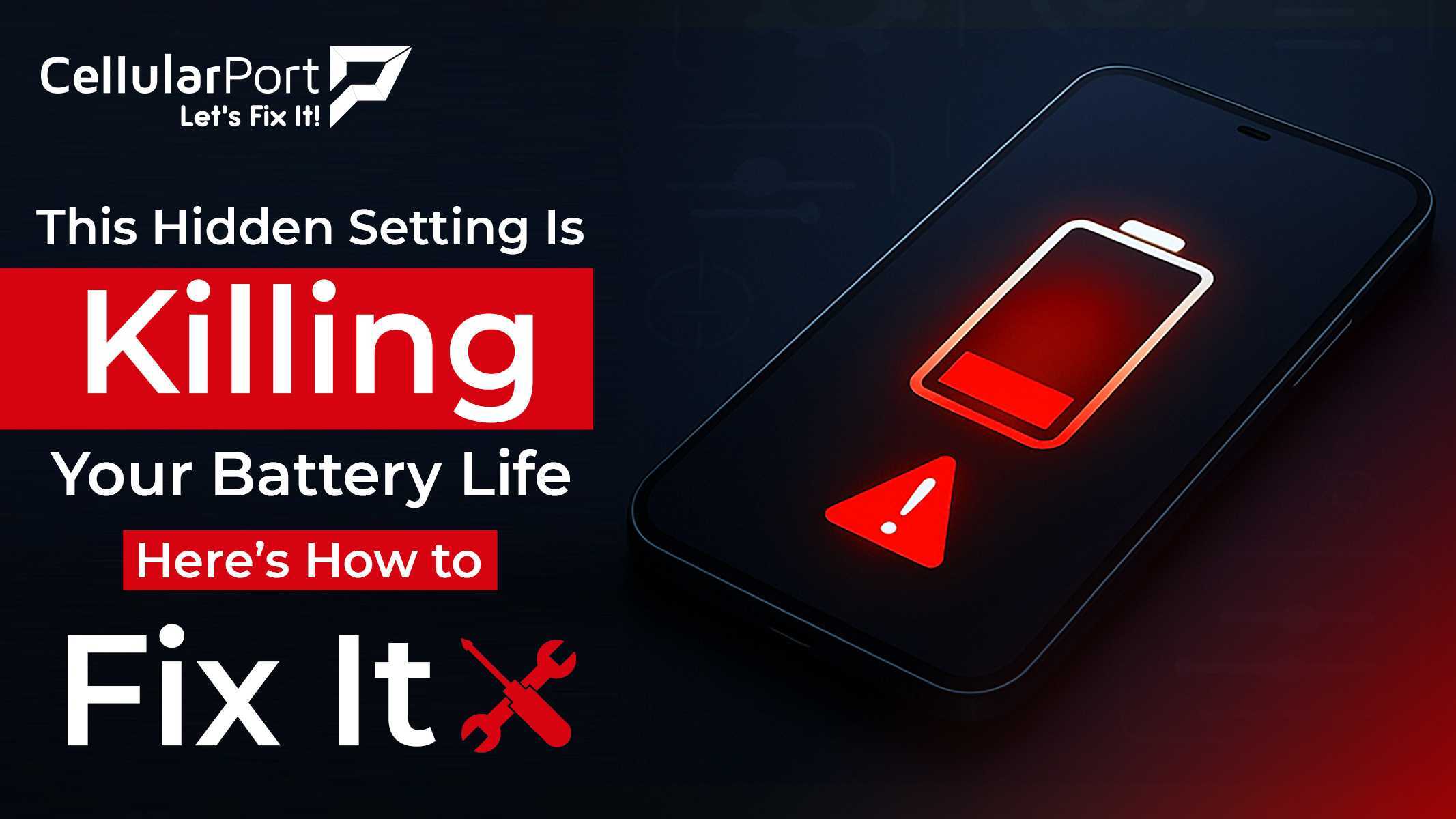When your smartphone screen shatters or your device suddenly stops working, panic sets in. We rely on our phones for nearly everything, and being without one feels like losing a limb. This vulnerability makes you an easy target for repair scams. With repair costs potentially running hundreds of dollars, knowing how to spot a dishonest quote isn’t just helpful—it’s essential for protecting your wallet.
The Emotional Toll of Phone Damage
Let’s be honest: breaking your phone feels terrible. Beyond the financial hit, there’s that sinking feeling when you realize your digital lifeline is compromised. Scammers know this and prey on your desperation for a quick fix.
“People make their worst financial decisions when they’re stressed,” says consumer protection advocate Melissa Chen. “A broken phone creates exactly that kind of pressure—you want it fixed immediately, and that urgency clouds judgment.”
The Repair Industry’s Hidden Truths
The mobile repair industry has exploded into a $4 billion market in the US alone. While many repair shops operate honestly, the industry remains largely unregulated, creating ample opportunity for predatory practices.
A recent consumer survey found that 38% of people who had their phones repaired felt they paid more than necessary, and 22% discovered additional “repairs” they hadn’t authorized. These statistics reveal how common repair scams have become.
Red Flags That Scream “Scam”
The Bait and Switch Quote
You’ve probably experienced this: A repair shop advertises screen replacements for $49, but when you arrive, suddenly your specific model costs $149 because it’s “special.” This classic bait-and-switch tactic relies on you being too invested in the process to walk away once you’re in the store.
James Morrison experienced this firsthand: “They quoted me $75 over the phone for my iPhone screen. When I got there, they said that was just for the labor—parts were another $120. By then, I’d already taken time off work to go there, so I reluctantly paid.”
The “While We’re In There” Upsell
You brought your phone in for a simple battery replacement, but suddenly the technician discovers “serious water damage” or a “failing logic board” that needs immediate attention. This opportunistic upselling preys on your limited technical knowledge and fear of future problems.
The Parts Switcheroo
Some unethical shops quote you for genuine manufacturer parts but install cheap third-party components instead. Since most consumers can’t tell the difference, this scam is particularly lucrative and difficult to detect.
The Diagnostic Fee Trap
Beware of shops charging high diagnostic fees regardless of whether you proceed with repairs. While reasonable diagnostic charges exist, some shops use inflated diagnostic fees as a profit center, knowing many customers will pay just to find out what’s wrong.
Also Read: Should You Give Your Password To A Phone Repair Shop?
The Fastest Way to Spot a Scam Quote
The most reliable method for determining if a repair quote is legitimate comes down to a simple comparative approach:
- Get multiple quotes from different repair providers
- Research the average cost for your specific repair online
- Compare against manufacturer repair pricing
This three-pronged approach gives you a pricing baseline that makes outliers immediately obvious. An unusually low quote might indicate poor-quality parts, while an extremely high quote could signal a scam.
The Power of Multiple Quotes
Always get at least three quotes before committing to a repair. This simple step dramatically reduces your chances of being scammed.
When Sarah Lee’s iPhone camera stopped working, she called three local shops:
- Shop A: $199 for camera replacement
- Shop B: $89 for camera replacement
- Shop C: $245 for camera replacement plus “necessary” system updates
The outliers became obvious. Shop C was attempting to upsell unnecessary services, while Shop B offered a competitive rate using quality parts.
Research Common Repair Costs
Knowledge is your best defense. Here are typical repair costs for common issues (as of 2025):
iPhone Screen Replacement:
- iPhone 13/14 models: $180-$280
- iPhone 15 models: $250-$350
- iPhone 16 models: $300-$400
Samsung Screen Replacement:
- Galaxy S22/S23: $200-$300
- Galaxy S24/S25: $250-$350
Battery Replacement:
- Most iPhone models: $50-$90
- Most Samsung models: $60-$100
Charging Port Repair:
- Most phones: $60-$120
These ranges account for genuine parts and qualified labor. Quotes significantly below these ranges should raise concerns about part quality, while those far above may indicate predatory pricing.
Manufacturer Repair Services as a Baseline
Apple, Samsung, and Google all offer official repair services. While they’re typically more expensive than independent shops, they provide a reliable ceiling price for comparison.
For example, Apple charges $279 for an iPhone 15 screen replacement without AppleCare+. If an independent shop quotes you $350 for the same repair, you should question why their price exceeds the manufacturer’s.
The “Too Good to Be True” Warning
Extremely low quotes almost always indicate something’s wrong. Phone repairs require specific parts and technical skill—there’s a minimum cost floor that legitimate repairs cannot go below.
When Mike Rodriguez was quoted just $29 for an iPhone battery replacement (versus Apple’s $69), he thought he’d found a bargain. “After the repair, my battery actually performed worse than before, and the phone would randomly restart. When I took it to Apple, they found a cheap aftermarket battery had been improperly installed, damaging my phone’s power management system. The ‘bargain’ repair ended up costing me a whole new phone.”
Also Read:Estimated Time for iPhone Repair – Detailed Guide
How Legitimate Shops Price Repairs
Understanding how honest repair shops determine pricing helps you evaluate quotes:
- Parts cost: Quality replacement parts have minimum costs based on market value
- Labor time: Skilled technicians value their time appropriately
- Overhead expenses: Shops have rent, equipment, and insurance costs
- Warranty coverage: Reputable shops include some warranty protection
When a quote seems suspiciously low, one or more of these factors is being compromised—usually parts quality or technician expertise.
The “No Receipt” Red Flag
Always insist on a detailed receipt specifying:
- Exactly what parts were replaced
- Whether parts are OEM (Original Equipment Manufacturer) or third-party
- Labor charges broken down clearly
- Warranty terms in writing
If a shop is reluctant to provide this information, consider it a warning sign. Legitimate businesses have nothing to hide regarding their pricing structure.
The Hidden Signals
Customer reviews can reveal patterns of deceptive pricing. Look specifically for:
- Mentions of unexpected price increases after repairs began
- Complaints about repairs using different parts than quoted
- Reports of issues recurring shortly after repair
- Comments about unauthorized additional “fixes”
Pay special attention to how the business responds to negative reviews. Defensive or dismissive responses often indicate problematic business practices.
Technical Expertise as Protection
Basic technical knowledge serves as powerful protection against repair scams. Understanding a few fundamentals about your device can help you evaluate whether a quoted repair makes sense:
- Screen replacement is typically the most expensive repair due to display technology costs
- Battery replacement is generally straightforward and shouldn’t cost hundreds of dollars
- Water damage claims should be specific about which components are affected
- Logic board repairs are legitimately expensive and complex
Armed with this knowledge, you can better assess whether a repair quote aligns with the actual technical requirements.
Questions That Expose Scams
When getting a repair quote, ask these revealing questions:
- “What brand of replacement parts do you use?” (Vague answers are red flags)
- “Can I see the replacement part before installation?” (Reluctance suggests part-switching)
- “Do you provide a written warranty?” (No warranty often indicates low confidence in their work)
- “What happens if the repair doesn’t fix the problem?” (Their answer reveals their service philosophy)
- “Can you itemize the parts and labor costs?” (Resistance to transparency suggests hidden markups)
A legitimate repair shop welcomes these questions and answers transparently.
The Insurance and Warranty Factor
Before seeking repairs, always check whether your phone is still covered by:
- Manufacturer warranty
- Extended warranty purchased with the device
- Protection through your credit card (many offer 90-day purchase protection)
- Carrier insurance
- Homeowner’s or renter’s insurance (for theft or major damage)
Using these existing coverages can save you from repair scams entirely.
The DIY Temptation
The availability of repair kits and YouTube tutorials makes DIY fixes tempting. However, modern smartphones are increasingly difficult to repair without specialized tools and expertise. A botched DIY attempt often results in more damage and higher repair costs.
Consider DIY only for the simplest repairs on older devices, and approach with caution. The money saved rarely outweighs the risk of further damage.
When to Choose Replacement Over Repair
Sometimes the wisest choice is replacing rather than repairing your device. As a general rule:
If repair costs exceed 50% of a new device’s price, replacement is often more economical, especially for phones over two years old where other components may soon fail.
“People get emotionally attached to their phones and will pay almost anything to fix them, even when buying new makes more financial sense,” explains consumer technology analyst David Park. “Scammers exploit this emotional connection to justify excessive repair prices.”
Preventing Future Repair Needs
The best way to avoid repair scams is preventing damage in the first place:
- Use quality protective cases and screen protectors
- Avoid exposure to extreme temperatures
- Keep phones away from water and humidity
- Invest in charging cables from reputable manufacturers
- Back up your data regularly so a damaged phone isn’t a data emergency
These preventive measures significantly reduce your vulnerability to repair scams by keeping you out of the repair marketplace altogether.
Finding Trustworthy Repair Providers
How do you find honest repair services? Look for:
- Established businesses with physical locations (not just mall kiosks)
- Certification from recognized organizations like the WISE Certification program
- Transparent pricing posted online or clearly explained
- Reasonable but not too-short repair timeframes (quality work takes time)
- Willingness to explain exactly what they’re doing and why
- Clear warranty terms
Shops meeting these criteria are more likely to provide honest service at fair prices.
Also Read: A Complete Guide to Android and iPhone Screen Repair Cost
What To Do If You’ve Been Scammed
If you believe you’ve been victimized by a repair scam:
- Document everything, including quotes, receipts, and communications
- File a complaint with your state’s consumer protection office
- Report the business to the Better Business Bureau
- Leave detailed reviews on major platforms to warn others
- Consider small claims court for significant financial losses
While recovery can be difficult, these actions help protect other consumers from similar experiences.
The Future of Phone Repairs
The repair landscape is evolving. “Right to Repair” legislation is gaining momentum across states, potentially bringing more standardization and transparency to the industry. Meanwhile, manufacturers are slowly improving repair options, with Apple’s Self Service Repair program representing a notable shift toward more repair accessibility.
These developments may eventually reduce repair scams, but for now, vigilance remains essential.
The Value of Relationship-Based Repairs
Building a relationship with a trusted local repair shop before you have an emergency creates a valuable resource. When disaster strikes, you’ll already have a trusted partner for repairs, significantly reducing your vulnerability to scams.
In Conclusion
Beyond all specific strategies, your intuition remains a powerful tool. If a repair situation feels wrong—if the technician seems evasive, if the shop appears disorganized, if the deal sounds implausibly good—trust that feeling.
Legitimate repair professionals welcome informed customers and transparent transactions. They’re not afraid of your questions or your desire to understand exactly what you’re paying for.
When your valuable smartphone needs repair, remember that a few minutes of research and comparison can save you from a costly scam. The fastest way to identify a dishonest quote is simply to compare it against multiple alternatives and industry standards.
Need Honest Phone Repair Services?
At CellularPort, we believe in transparent pricing, quality parts, and repairs done right the first time. Our technicians are certified, our parts are premium quality, and our warranties are clearly defined. Visit us for a free, no-obligation quote on your phone repair needs.

















